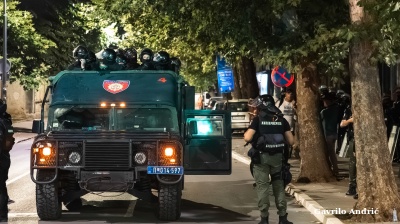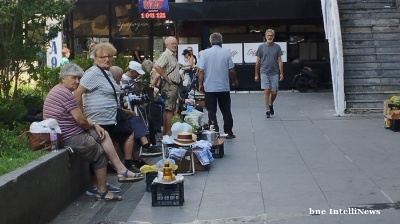Peru has once again captured global attention in the high-end gastronomic arena. Just two years after Central in Lima was named the best restaurant in the world, its fellow capital-based counterpart Maido has now claimed the number one spot in The World’s 50 Best Restaurants 2025 ranking, announced in Turin on June 19. This is not only a personal triumph for chef Mitsuharu “Micha” Tsumura, but a wider validation of Peru’s rise as one of the most dominant culinary forces on the planet.
From 'cult curiosity' to global beacon
Maido, founded in 2009 by Tsumura in Lima’s Miraflores district, was long a fixture on Latin America’s fine dining map. The restaurant is famed for its masterful presentation of Nikkei cuisine — a refined blend of Japanese techniques and Peruvian ingredients — which until recently remained a niche genre globally. Having made its debut on The World’s 50 Best list in 2015, Maido consistently climbed the rankings, reaching fifth place globally in 2024, and claiming the title of Latin America’s best restaurant on four separate occasions. This year, it surpassed the Barcelona-based Disfrutar to become the top-ranked restaurant globally.
Tsumura, born in Lima to a Japanese-Peruvian family from Osaka, trained in culinary arts at Johnson & Wales University in the United States before returning to Japan to master traditional techniques. There, he worked at establishments such as Seto Sushi and the izakaya-style Imo to Daikon. After returning to Lima, a brief tenure at the Sheraton Hotel preceded the opening of Maido at just 28 years old.
In an interview cited by El País, Tsumura says he now focuses on exploring deeper elements of Peru’s own culinary heritage, particularly from the Amazon, hailing it as “one of the most incredible places on the planet,” with less than 10% of its food potential understood or utilised.
The Maido experience
Far from a standard fine dining venue, Maido delivers a playful, sensory-rich tasting menu that pays homage to Peru’s vast biodiversity. The 10-course-plus experience includes dishes such as squid ramen with Amazonian chorizo, sea snails topped with ají amarillo foam, and Tsumura’s signature 50-hour-braised short rib. Other offerings reinterpret Peruvian street staples, such as El Triple, a deconstructed sandwich with avocado, egg, tomato, and pork belly.
Tsumura explained his philosophy to The World’s 50 Best: “The idea is to democratise deliciousness... it’s about fun, not formality.” That blend of accessibility and precision, along with a commitment to showcasing native ingredients, has propelled Maido to its current prestige.
This is the second consecutive time a Lima-based restaurant has clinched the world’s top culinary title. Central, run by Virgilio Martínez and Pía León, was crowned in 2023. The Peruvian capital is now home to four entries in the 2025 list: besides Maido (No.1) and Central, Kjolle — also helmed by León — came in at ninth, while Mérito and Mayta ranked 26th and 39th respectively. Such concentration of top-tier restaurants in one city is rare and underscores Lima’s transformation into a global fine dining capital.
A culinary paradox: gastronomic glory amid food insecurity
Yet this global recognition casts a sharp light on an unresolved paradox within the South American nation. According to 2024 data from the FAO, Peru is the country with the highest level of food insecurity in the region. While Peruvian cuisine garners international awards and acclaim, 51.7% of the country’s population lives under moderate or severe food insecurity — approximately 17.6mn people without guaranteed access to a healthy diet.
The ovation in Italy highlighted the symbolic and technical value of Maido’s culinary excellence. “This is for everyone’s work, for believing in what we do, for trusting Peruvian products, its history, and what we can express through food,” Tsumura said. But the FAO’s statistics draw another map — one where excellence remains out of reach for much of the population.
Food insecurity, as defined by the FAO, goes beyond extreme hunger. It includes those unable to access a regular, nutritious diet. The effects ripple across physical health, cognitive development, and everyday life. Between 2021 and 2023, 126mn people across Latin America experienced food insecurity, with Peru emerging as the region’s most acute case. The crisis is driven by economic stagnation, climate change, and COVID-19 pandemic aftershocks.
A key factor is the economic strain on households. Slowed production, rising prices of staple foods like rice, oil, potatoes, and chicken have all lowered purchasing power. Despite Peru’s internationally lauded agricultural diversity, that abundance is not equitably accessible. Markets in Lima, Arequipa, Piura, and Puno have seen price spikes that force many families to reduce both the quantity and quality of their meals.
Millennials and the global appetite for Peruvian flavours
The core demographic of culinary tourists is increasingly millennial, accounting for roughly 54% of visitors attracted by Peruvian cuisine, according to Infomercado. These travellers seek authenticity and immersion, often participating in local food tours, cooking classes, and traditional market visits. As such, the rise of establishments like Maido not only draws wealthy foodies but also indirectly boosts local economies and small-scale producers across the country.
Peru’s culinary DNA is defined by fusion — a result of centuries of cultural layering from Spanish colonisation, African, Chinese and Japanese migration, and native Andean traditions. Nowhere is this more evident than in Nikkei cuisine, which has transitioned from a novelty to a global movement, in large part thanks to Maido’s consistency and evolution.
Tsumura, whose early struggles almost led him to shutter the restaurant, credits his family and Peruvian diners for encouraging him to persevere. In 2024, when receiving the Estrella Damm Chefs’ Choice Award, he recalled how early customers told him, “don’t close, we love what you do.” Their loyalty, combined with his culinary audacity, has now placed Lima firmly on the world’s gourmet map.
Global competition and Latin America’s surge
The 2025 edition of The World’s 50 Best Restaurants reflects a notable surge in Latin American representation. Quintonil from Mexico City took third place, Don Julio from Buenos Aires remained in tenth, and DiverXO from Madrid and Asador Etxebarri in Spain filled out the top four alongside Denmark’s Alchemist.
Yet it is Peru that stands out. As Maido ascends to the pinnacle of global cuisine, it does so not as an anomaly, but as part of a broader trend. With its chefs focused on innovation and cultural authenticity — and the world increasingly hungry for the layered, intense, and surprising flavours of the Andes and Amazon — Peru's gastronomic dominance looks set to continue.
Features

World Bank seems to be having second thoughts about Tajikistan’s Rogun Dam
Ball now in Dushanbe’s court to justify high cost.

INTERVIEW: From cinema to Serbian police cell in one unlucky “take”
An Italian software engineer caught in Belgrade’s August protests recounts a night of mistaken arrest and police violence in the city’s tense political climate.
_Cropped_1756210594.jpg)
Turkey breaks ground on its section of the TRIPP rail corridor
Turkish project would help make TRIPP the go-to route for Middle Corridor freight.

Disastrous harvest gives bitter taste of food inflation in North Macedonia
Cash-strapped shoppers tell bne IntelliNews’ Skopje correspondent that preparing ajvar and other traditional winter preserves is becoming prohibitively expensive.




